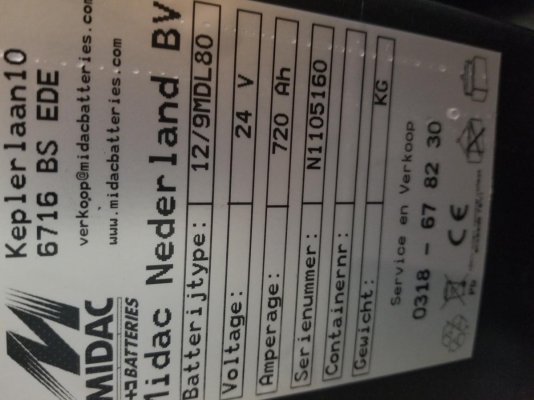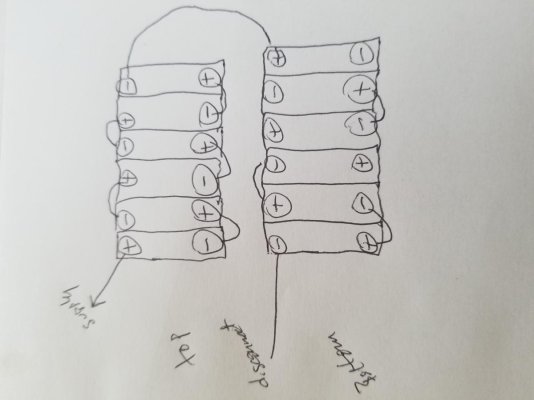klee wyck
Guru
- Joined
- Feb 8, 2014
- Messages
- 987
- Location
- USA
- Vessel Name
- Domino and Libra
- Vessel Make
- Malcom Tennant 20M and Noordzee Kotter 52
Attached are pictures of the battery spec labels and the wiring diagram for how these 12 batteries are connected. You will see immediately in the diagram that I missed drawing in one connection on the bottom row but I assure you it is there.
I have been told I am sure, but today I am scratching my head for how many amp hours I have stored at 100% of capacity on these pretty new industrial (<2 yrs) cells. I have a Victron Energy battery monitor and cannot pull it down below the mid 90s when I am cruising with no generator or away from power for short lengths of time. I have not put it to the test with days away from power or cruising. I had thought this came out to about 1400 amp hours of a twelve volt bank equivalent but it is acting like more than that it appears to me. Admittedly we do not run much AC on this boat as we are not in AC country. Still, frig, freezer coffee, convection microwave.
Help from the guru gallery please....
I have been told I am sure, but today I am scratching my head for how many amp hours I have stored at 100% of capacity on these pretty new industrial (<2 yrs) cells. I have a Victron Energy battery monitor and cannot pull it down below the mid 90s when I am cruising with no generator or away from power for short lengths of time. I have not put it to the test with days away from power or cruising. I had thought this came out to about 1400 amp hours of a twelve volt bank equivalent but it is acting like more than that it appears to me. Admittedly we do not run much AC on this boat as we are not in AC country. Still, frig, freezer coffee, convection microwave.
Help from the guru gallery please....


